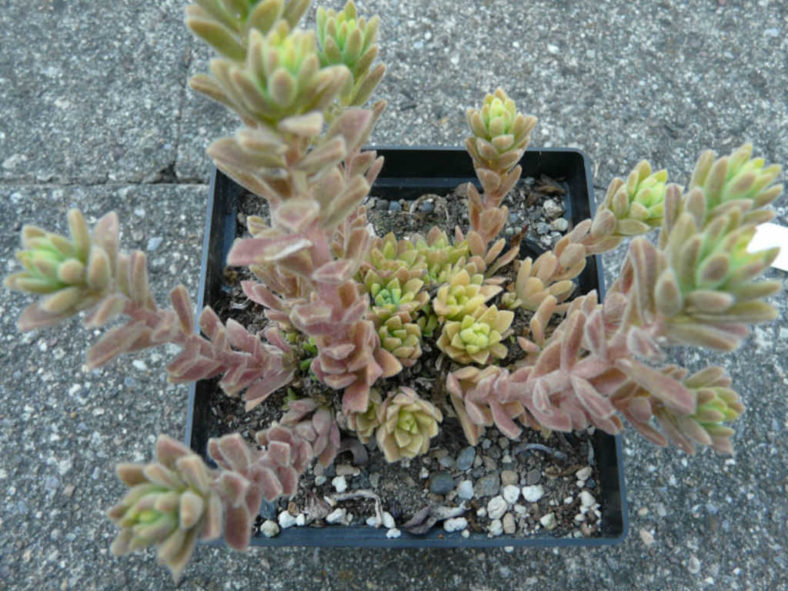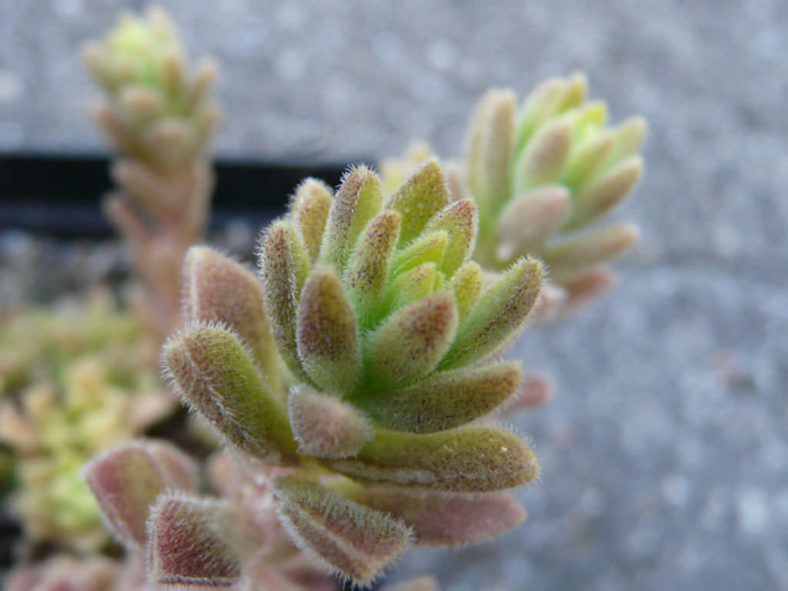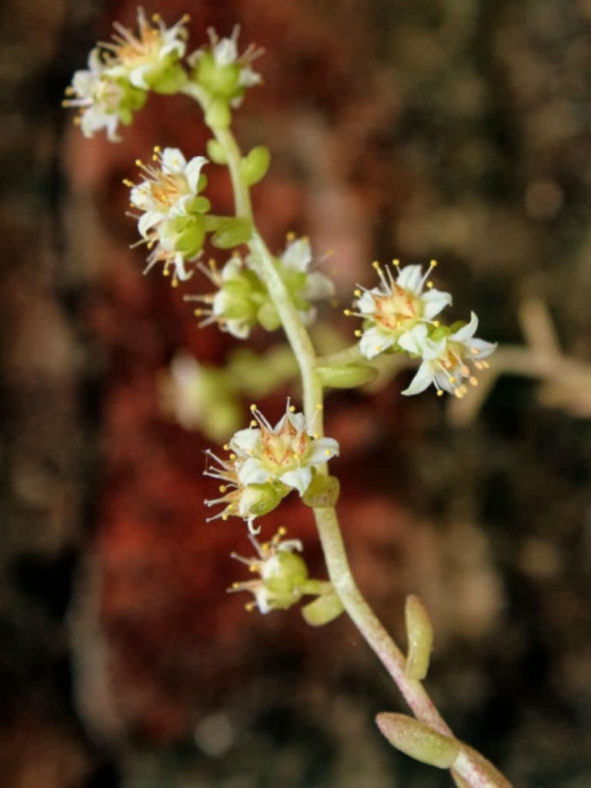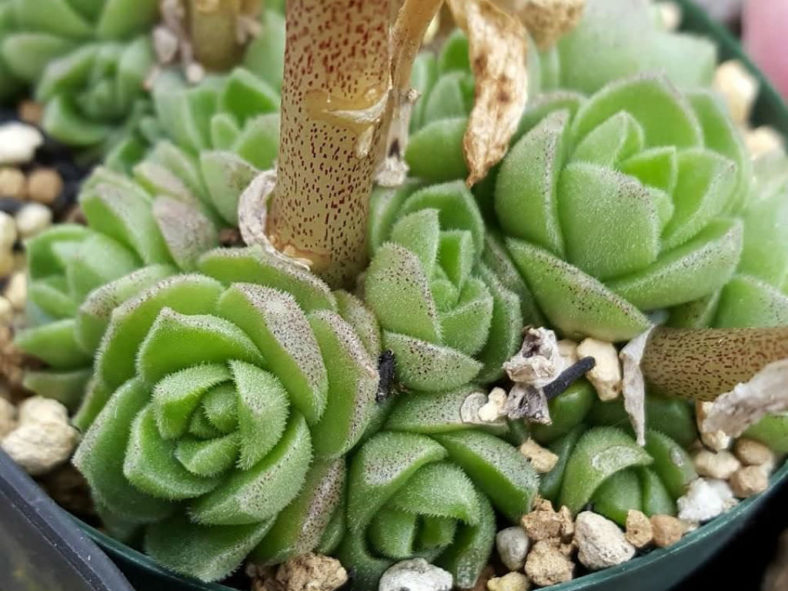Scientific Name
Sedum hemsleyanum Rose
Common Name(s)
Princess Necklace
Synonym(s)
Sedastrum hemsleyanum, Sedastrum pachucense, Sedastrum painteri, Sedum pachucense, Sedum painteri
Scientific Classification
Family: Crassulaceae
Subfamily: Sempervivoideae
Tribe: Sedeae
Genus: Sedum
Etymology
The specific epithet "hemsleyanum" honors William Botting Hemsley (1843-1924), an English botanist, Keeper of the Herbarium at Kew, and Victoria Medal of Honour in Horticulture recipient.
Origin
Sedum hemsleyanum is native to Mexico and Guatemala.
Description
Sedum hemsleyanum is a succulent plant that forms rosettes of green leaves covered with short, soft hairs. The rosettes elongate into an erect, tall flower spike with small flowers. They produce offsets near the base and form small clumps. The leaves can turn reddish in winter. They are lance-shaped, measuring up to 2.4 inches (6 cm) long and 0.5 inches (1.3 cm) wide.
The flowers appear in winter and have white petals with partly green keel and red or sometimes yellow anthers. The flower spike can grow up to 16 inches (40 cm) tall.

How to Grow and Care for Sedum hemsleyanum
Light: These succulents grow best in locations where they enjoy the full sun for at least six hours daily. Most species will tolerate partial shade but will not thrive in deep shade.
Soil: Sedums do not like to sit in waterlogged soil, so drainage is essential to prevent root rot. Choose a gritty, well-draining soil.
Hardiness: Sedum hemsleyanum can withstand temperatures as low as 0 to 40 °F (-17.8 to 4.4 °C), USDA hardiness zones 7a to 10b.
Watering: Sedum plants are drought-tolerant but do need some water. They do their best with regular watering from spring through fall. Water thoroughly and wait for the soil to dry out before watering again.
Fertilizing: A balanced organic fertilizer each spring is generally all Sedums require. Feeding is unnecessary as long the plants are divided annually and provided with fresh soil.
Repotting: Sedums in containers require little more care than gardens. Repot your plants when they outgrow their current pot by moving them to a larger container to hold the plant better.
Propagation: Once you have one Sedum, it is easy to make more by taking stems or leaf cuttings and dividing the plant. Sedums are also easy to grow from seed.
Learn more at How to Grow and Care for Sedum.
Toxicity of Sedum hemsleyanum
Sedums are not listed as toxic for people but can be mildly toxic to pets and children.
Links
- Back to genus Sedum
- Succupedia: Browse succulents by Scientific Name, Common Name, Genus, Family, USDA Hardiness Zone, Origin, or cacti by Genus
Photo Gallery
Click on a photo to see a larger version.


